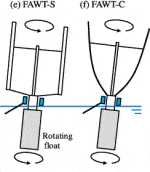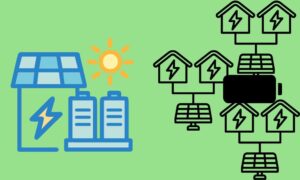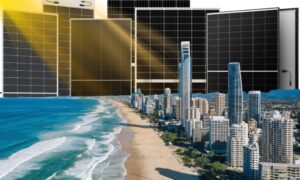Offshore wind farms have traditionally been more expensive to build and maintain than their land based counterparts, but a floating axis wind turbine concept could result in a substantial cost reduction of offshore power generation.
There has been increasing interest in using vertical axis wind turbines offshore instead of the traditional windmill- type horizontal axis wind turbines due to advantages relating to cost and ease of maintenance.
According to researchers from the Korea Advanced Institute of Science and Technology and University of Tokyo, their floating axis wind turbine (FAWT) takes the vertical turbine one step further by challenging the idea that a wind turbine’s axis should be stable and in an upright position.
The researchers propose a design based on a cylindrical float that rotates with upper structures of the turbine. The tilt angle of the structure varies according to the balance of turbine thrust and stability of the float. The torque of the turbine is converted to electricity by bearing rollers and generators above the sea surface, positioned at a low height to provide easy maintenance access.
In a paper published in Environmental Letters, the authors claim their studies to date shows the installed cost per rated power of the FAWT is 50% and 57% of those in the referenced HAWT (horizontal axis wind turbine) and guyed VAWT (vertical axis wind turbine) configurations respectively. The estimated cost of electricity produced is estimated to be around 25% lower than that of the base HAWT.
“FAWTs inherit the simple mechanism and low maintenance cost of VAWTs,” the paper states. “Installation of FAWTs does not require floating cranes and other specifically designed service vessels.”
While the authors acknowledge there are many unknown factors and possible challenges in relation to their design at this point in time, they believe the FAWT will be a breakthrough in lowering the cost of offshore wind power.
Lead author Hiromichi Akimoto hopes further research on the concept will lead to the construction of a small test plant.














































